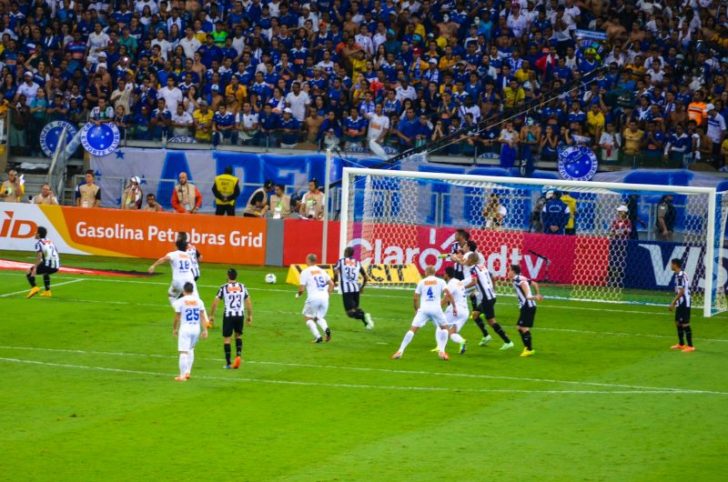
Ligue 1 Adopts ‘Simplified’ Yellow Card Suspension System for Season 2025/26

Starting in the 2025/26 season, Ligue 1 is changing the yellow card suspension rule, and it is about time. The old system had players walking a tightrope after just 3 yellow cards in 10 games. That is now scrapped. Instead, players won’t be suspended until they reach 5 yellow cards in a single season.
Yellow cards now follow a simpler rule: No more trying to count matches or guessing when a suspension kicks in. Five yellows, and you’re out for a game. Simple as that.
The previous rule punished players quickly. Just 3 yellow cards in a 10-match stretch, and you would be benched. It wasn’t just harsh, it was hard to follow. Coaches, players, and even fans often got caught off guard by surprise suspensions.

Weigler / Unsplash / Now, with the new setup, players can pick up a few yellows without facing an automatic ban too fast.
They get more room to play hard without being punished for minor fouls every few weeks. It gives defenders and midfielders a bit of breathing room.
A Season-Long View on Discipline
The yellow card system now resets at the end of the season, just like before. But the countdown runs across all matches, not just a 10-match window. That means a yellow in August counts the same as one in May. This puts more weight on consistency. Players have to stay sharp all year, not just for a handful of games. A bad habit early on can still cost them later if they are not careful.
The new yellow card rule now stretches across the board. That includes Ligue 2, Coupe de France, and the Trophée des Champions. If you rack up five yellows in any of those combined, you are out for the next game. It keeps things unified and easier to manage. No more figuring out different rules for each tournament. A yellow is a yellow, no matter where it happens.
Ligue 1’s update brings France in line with how most top European leagues handle yellow cards. The Premier League, for example, uses a similar system with season-long tracking.

BR Football / IG / The new change makes it easier for players who move between leagues. It also makes things clearer for fans watching across borders.
The LFP, which runs Ligue 1, said the goal was to clean things up. The 10-match rule was confusing and often led to surprise bans. That is bad for clubs, fans, and the players themselves.
With this switch, everyone knows what is going on. Five yellow cards lead to a suspension. It is fair, transparent, and a lot easier to track, meaning there will be no more surprises before a big match.
What It Means for Players
For players, the rule gives more freedom but also more responsibility. They have more space to be aggressive, but they have to manage their style over a whole season. Picking up five yellows too early could mean missing a key game later.
They will need to think twice before arguing with the ref or making a reckless tackle. One silly booking in September might come back to bite them in March.
Coaches and analysts will have to track yellow cards more closely than ever. With the rule applying to every match across all domestic competitions, teams can’t afford to slip up.
A key player picking up their fifth yellow just before a big derby or a title decider? That is a disaster. Clubs will need better data, better planning, and more focus on discipline from day one.
More in Football
-
`
Key Highlights From UFC 317 (June 26 – 29, 2025)
UFC 317 took over Las Vegas from June 26 to 29, 2025, and it didn’t waste a second. Fights were fast,...
July 9, 2025 -
`
Who Invented Basketball? Here’s All You Need to Know
Basketball didn’t just show up one day. It had to be invented. The story most people know starts in 1891 with...
July 3, 2025 -
`
What to Do (And What to Avoid) Before a Cruise
A cruise vacation is an incredible escape from the daily grind, offering relaxation, adventure, and the chance to explore new places....
June 25, 2025 -
`
Big Ten Basketball Power Rankings 2025. Can You Guess Who’s #1?
Big Ten basketball is once again the loudest, toughest, and deepest show in college hoops. The 2024-25 season was stacked with...
June 18, 2025 -
`
How Russia Is Using ‘Terrifying’ Fiber Optic Drones in Ukraine
In Ukraine, the battlefield is changing fast. Russian drones are not just flying cameras anymore, they are controlled by fiber optic...
June 11, 2025 -
`
Top 5 College Football Teams for the 2025 Season Ranked
College football is about to get wild in 2025. After two years of Big Ten dominance, the SEC is ready to...
June 3, 2025 -
`
Famed British Dancer Jordan Banjo Set to Make Huge Misfit Boxing Debut
Jordan Banjo is trading in his dance shoes for boxing gloves, and fans can’t stop talking about it. The 32-year-old British...
May 29, 2025 -
`
5x Olympic Gold Medalist Sue Bird Becomes Managing Director of USA Women’s National Team
Sue Bird is not done making moves yet. After stacking five Olympic gold medals and running the show as point guard...
May 21, 2025 -
`
Russia Pushes Into Sumy, New ‘Security Strip’ Sparks Fresh Fears for Ukraine
Russia has kicked off a fresh push in Ukraine’s northeast, claiming to have forced Ukrainian troops out of the Kursk region...
May 14, 2025















You must be logged in to post a comment Login